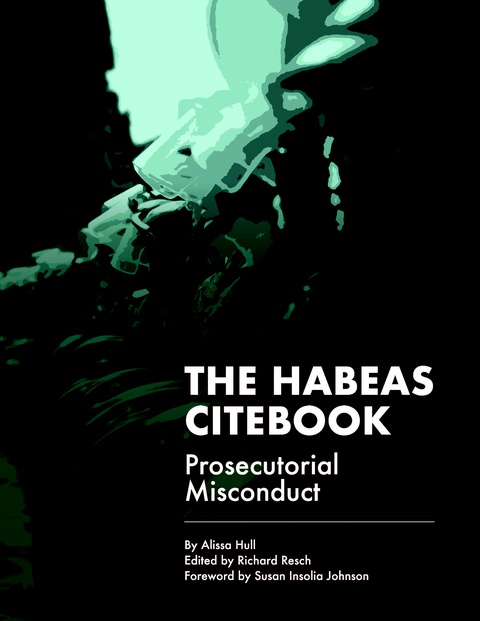by Douglas Ankney
Anthropology professor Dawnie Steadman, Director of the Forensic Anthropology Center at the University of Tennessee (“University”), and her colleagues “hypothesized that drugs found in decomposing bodies could have an influence on the behaviors of decomposers and result in differential rates of decomposition.” At the University’s Body Farm – “a 2.5-acre wooded property where researchers have been studying decomposition in a variety of natural settings” – researchers noticed an interesting phenomenon. “Human bodies donated for study and placed in the same environment at the exact same time were decomposing at different rates.” For example, there was heavy scavenging on some of the bodies while other bodies were entirely ignored. Insects colonized bodies at different times even though the bodies were in identical environments. And soil profiles revealed different chemical compounds among the individual bodies.
The varying characteristics of the bodies “appeared to enhance or disrupt decomposition.” This prompted the researchers “to question the accuracy of time-since-death approximations or the postmortem interval based on human and insect evidence.” Steadman and her team examined “the relationship between a donor’s drug use, end-of-life diseases, and their decomposition dynamics, which are affected by the behavior and presence of scavengers, insects, and …
by Douglas Ankney
The U.S. Court of Appeals for the Fourth Circuit vacated the convictions of Dr. Joel Smithers because the instructions failed to inform the jury that the mens rea of “knowingly or intentionally” of 21 U.S.C. § 841(a)(1) applied to that statute’s “except as authorized” provision.
Smithers was charged with 861 counts related to his opioid-prescription practices – one count of possession of a controlled substance with intent to distribute, in violation of §§ 841(a)(1) and (b)(1)(C); one count of maintaining a place for the purpose of unlawful distribution in violation of 21 U.S.C. § 856; and 859 counts of unlawful dispensing and distributing of a controlled substance in violation of § 841(a)(1).
At Smithers’ trial, the parties proposed differing instructions related to § 841(a)(1). In pertinent part, the statute reads: “Except as authorized ..., it [is] unlawful for any person knowingly or intentionally ... to manufacture, distribute, or dispense ... a controlled substance.” The parties’ dispute concerned the definition of “[e]xcept as authorized.” The Government requested it be defined in the disjunctive – that the medications were prescribed “without a legitimate medical purpose or beyond the bounds of medical practice.” In contrasat, Smithers requested the instruction …
by Douglas Ankney
The U.S. Court of Appeals for the Third Circuit affirmed the U.S. District Court for the Middle District of Pennsylvania’s denial of absolute immunity to a prosecutor where the complaint alleged facts sufficient to support a finding that the prosecutor’s acts served an investigatory function.
Larry Trent Roberts served 13 years in prison for the murder of Duwan Stern – a murder Roberts did not commit. After a new trial wherein Roberts was acquitted, he filed suit pursuant to 42 U.S.C. § 1983, alleging six claims related to his wrongful conviction. He named several state actors as defendants.
In Count II of the complaint, Roberts alleged Assistant District Attorney John C. Baer “fabricated evidence by way of knowingly influencing, enticing, and coercing an inculpatory statement from Layton Potter: a jailhouse snitch, who lacked any credibility, whose statement could not be corroborated, and was only concerned with benefitting himself.”
In Count IV, Roberts alleged that Detective David Lau “and Baer conspired to fabricate evidence for the purpose of convicting an actually innocent man” when Lau and Baer “knowingly sought out, influenced, and coerced an inculpatory statement from Potter.” According to Roberts’ complaint, a hole developed in the …
by Douglas Ankney
The Supreme Court of Delaware ruled that a warrant authorizing a search and seizure of “any and all” data of named files of a cellphone was an invalid “general warrant,” and the warrant was also invalid because it did not include a temporal limitation.
Andrea Casillas-Ceja’s four-year-old daughter J.S. told her that Jose Terreros had licked her vagina. Casillas made Terreros leave the home and called police. Days later, Casillas observed on the internet search history of Terreros’s cellphone several web searches related to J.S.’s accusations. Casillas reported her discovery to the police. Officer Jay Davidson’s application for a warrant included the following pertinent portion from his affidavit:
“Your affiant was advised by [Casillas] that she responded to [her front yard] where she located [Terreros cell phone]. [Casillas] advised that she proceeded to check the search history and found pornography, a search of how to detect if a little girl has been raped, how long saliva stays on the body, and a search of how long fingerprints stay on clothes/sheets/blankets.”
The application and affidavit sought authorization to search “[a]ny and all messages, any and all messaging apps, all search history, all photographs, videos, GPS coordinates, incoming …
by Douglas Ankney
In a case of first impression, the Massachusetts Supreme Judicial Court affirmed a trial court’s exclusion of expert testimony regarding an iPhone’s frequent location history data (“FLH”) evidence.
Victor Arrington was charged with first degree murder and other offenses related to the home invasion and killing of Richard Long at Long’s residence on Harvard Street in the Dorchester section of Boston. The Commonwealth moved in limine to admit the FLH data from Arrington’s iPhone and corresponding expert testimony explaining that the FLH data placed the iPhone “within a 143-foot radius” of the crime scene at the time of the crime.
The trial court conducted a series of Daubert-Lanigan hearings (from Daubert v. Merrell Dow Pharms., Inc., 509 U.S. 579 (1993), and Commonwealth v. Lanigan, 641 N.E.2d 1342 (Mass. 1994)), to evaluate the reliability of the proposed expert testimony about the FLH data. The Commonwealth’s forensic analyst testified that:
(1) he did not have access to the proprietary algorithm that generated the FLH data;
(2) he performed a series of tests with an iPhone similar to Arrington’s but not identical and that there were “likely differences” between the algorithms used in the two phones that …
by Douglas Ankney
The Department of Homeland Security (“DHS”) has an impressive cache of surveillance technology that includes, inter alia, automated license plate readers (“ALPR”) and cell-site simulators (“CSS”). The latest tracking and surveillance revelation is that DHS and other law enforcement agencies have been using TraffiCatch since 2019.
Deployed in Texas, TraffiCatch detects WiFi and Bluetooth signals in moving cars for tracking purposes. Bluetooth devices consistently broadcast a Bluetooth Device Address that is either a public address or a random address. Over the lifetime of the device, public addresses do not change and are the easiest to track.
But more common are the random addresses that have multiple levels of privacy. These addresses change regularly. Unless a Bluetooth device with a random address has paired with a device that has a public address, it is hard to track. However, Jenoptik, the manufacturer of TraffiCatch, reports that data derived from Bluetooth is combined with ALPR, permitting law enforcement to track individuals who switch vehicles and change license plates.
Immigration and Customs Enforcement (“ICE”) is already notoriously known for using CSS in violation of the law. CSS are devices that masquerade as legitimate cellphone towers, prompting cellphones within a certain …
by Douglas Ankney
The Court of Appeal of California, Fourth Appellate District, held that “if a defendant provides statistical evidence showing a racial disparity in the charging of non-minority defendants and African-American defendants, and provides evidence of non-minority defendants who engage in similar conduct and are similarly situated but were charged with lesser crimes than the charged African-American defendant, this is sufficient to show there was more than a mere possibility that a violation of [California Penal Code § 745(a)] has occurred. As such, a defendant has met his burden of establishing a prima facie case.” (Note: All statutory references are to the California Penal Code.)
Michael Earl Mosby, III, was charged by the Riverside County District Attorney’s Office (“DA”) with murder in connection with the drive-by shooting of Darryl King-Divens and a gun enhancement of discharging a firearm causing great bodily injury or death, along with three special circumstances – including having committed multiple murders. (Mosby had been involved in three additional shootings that resulted in two murders.) On March 15, 2019, the DA notified Mosby of the People’s intent to seek the death penalty.
In July 2022, defense counsel filed a motion alleging that the DA’s decision …
by Douglas Ankney
Australian researchers at Flinders University have employed a promising new technique to collect and record forensic DNA evidence from crime scenes. A new study appearing in Electrophoresis focused on the DNA retrieved from air conditioning (“AC”) units that circulate a room’s air, including different types of filters at alternate periods.
While a crime scene may be wiped clean of fingerprints, Mariya Goray, senior lecturer in forensic science at Flinders and author of the study, said “it is very unlikely that an average offender, even with forensic awareness, could totally prevent their DNA from being released into the environment.
Samples of Environmental DNA (“eDNA”) from AC units in four offices and four houses were collected at different times following cleaning. Samples were also collected from the air. The eDNA collected on the surfaces of AC units tended to be from previous room occupants while eDNA detected in the air represented more recent occupants. Goray said “[w]e now know that eDNA shed from sources, such as skin or saliva, can be detected in the environment, including soil, ice, air and water. We may be able to use this evidence to prove if someone has been in the room, …
by Douglas Ankney
The Supreme Court of Indiana clarified the framework for determining when a court may apply a cash bail toward payment of public-defender costs and toward payment of fines, costs, and fees.
Tailar L. Spells was arrested on charges related to her altercation with Officer Lynnford Parker of the Indianapolis Metropolitan Police Department. The trial court set a $250 cash bond, which was deposited in full by a third party – Diane Rolle. Both Spells and Rolle signed a cash-bond agreement pursuant to Indiana Code § 35-33-8-3.2 that permitted the trial court, “upon full satisfaction of all bond conditions, to ‘retain all or part of the cash to pay publicly paid costs of representation and fines, costs, fees, and restitution that the court may order the defendant to pay if the defendant is convicted.’” (Note: All further statutory references are to the Indiana Code.)
The trial court subsequently appointed a public defender and imposed a $100 supplemental public-defender fee. Spells was ultimately convicted at a bench trial of felony battery on Parker. Pertinent to this review, the trial court imposed probation, a $20 fine, and $185 in various fees and costs with the probation terminating upon, inter …
by Douglas Ankney
Due to the monumental increase in the number of appeals of bond decisions, the Illinois Supreme Court adopted new appellate rules recommended by a five-person taskforce (“Taskforce”). The Pretrial Fairness Act (“PFA”), implemented in April of 2023, allows pretrial detainees to appeal district courts’ decisions regarding conditions for release. Under the PFA, whether a person remains detained prior to trial is based on, inter alia, whether the person is a flight risk, a danger to the community, and the charges faced by the person. Each of these determinations by the judge may now be appealed.
Prior to enactment of the PFA, a bond was set by the judge. Infrequently, about 17 times each year according to the Taskforce, an appeal of the bond decision was sought. But under the PFA, the number of appeals was projected to total 4,557 annually. And in the five months following the PFA’s enactment, about 1,900 appeals have already been filed.
“That’s just too much of a change in too short of a time,” said Justice Eugene Doherty of the Fourth District Appellate Court and Taskforce member. Among the Taskforce’s recommendations adopted by the Supreme Court are:
* Issues with the …




